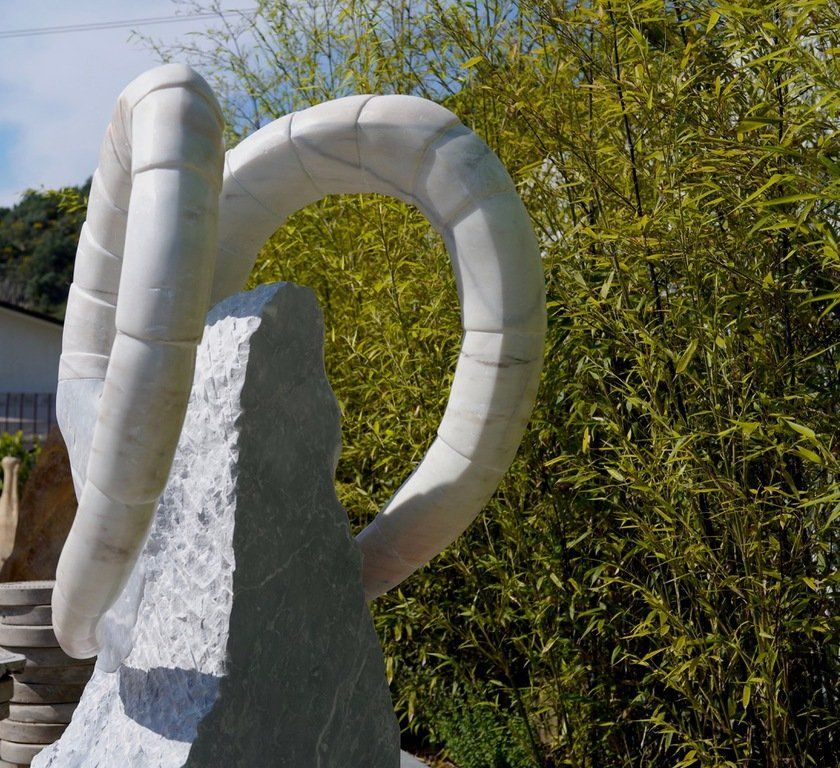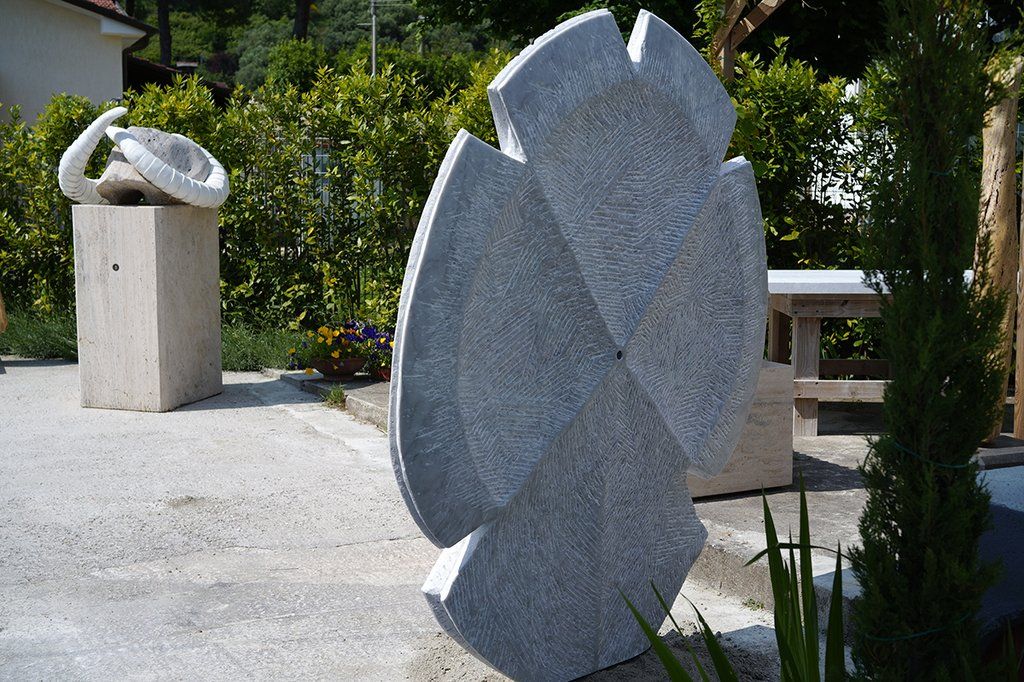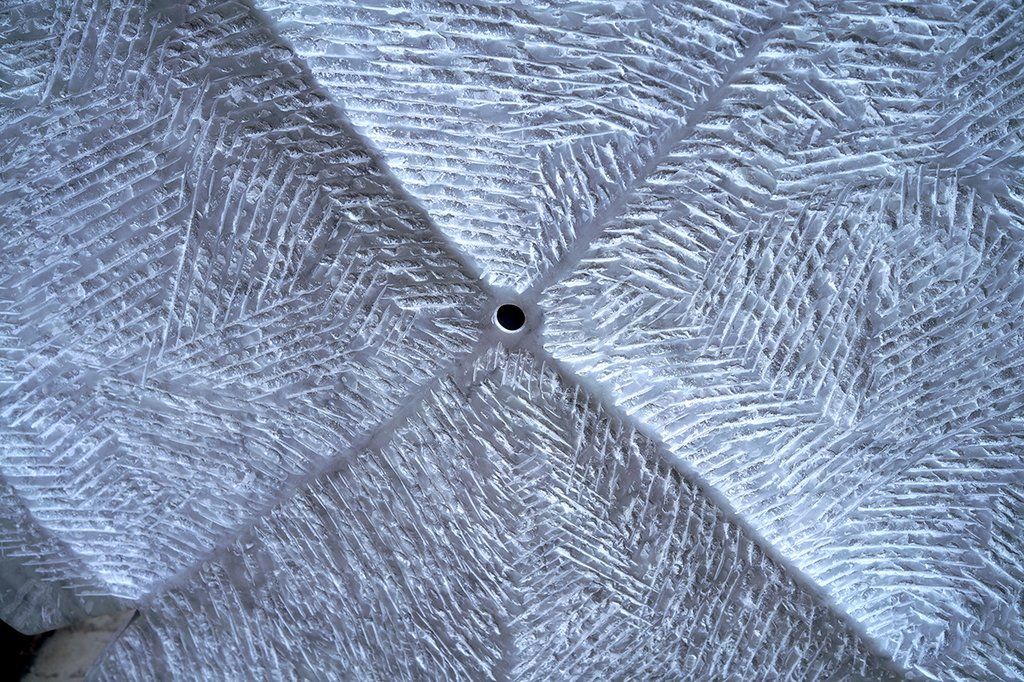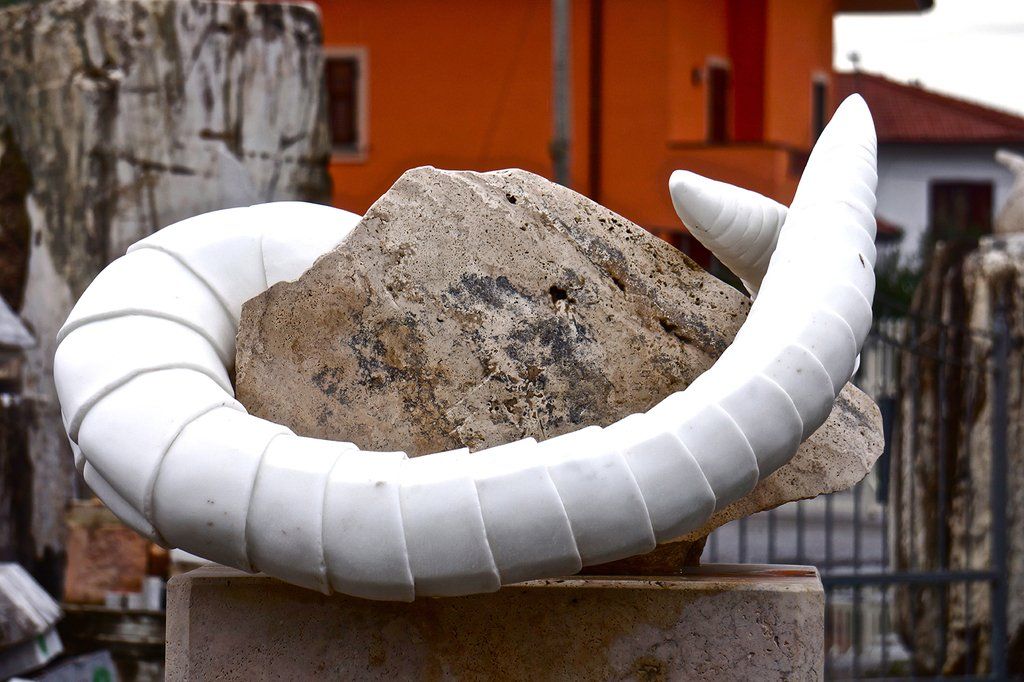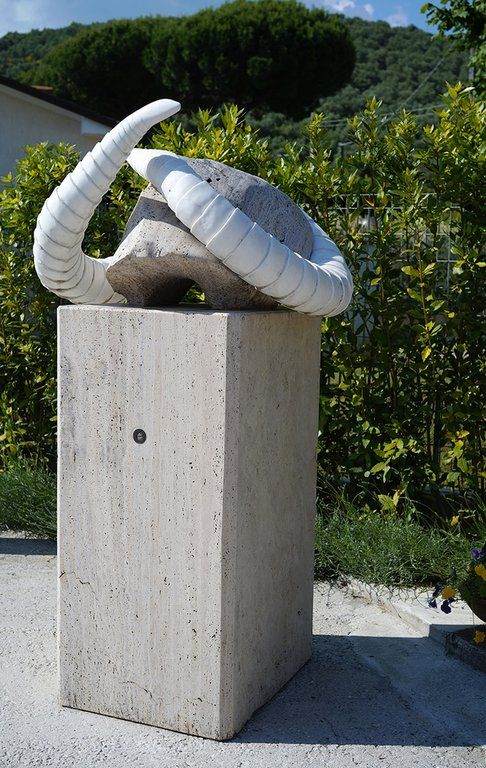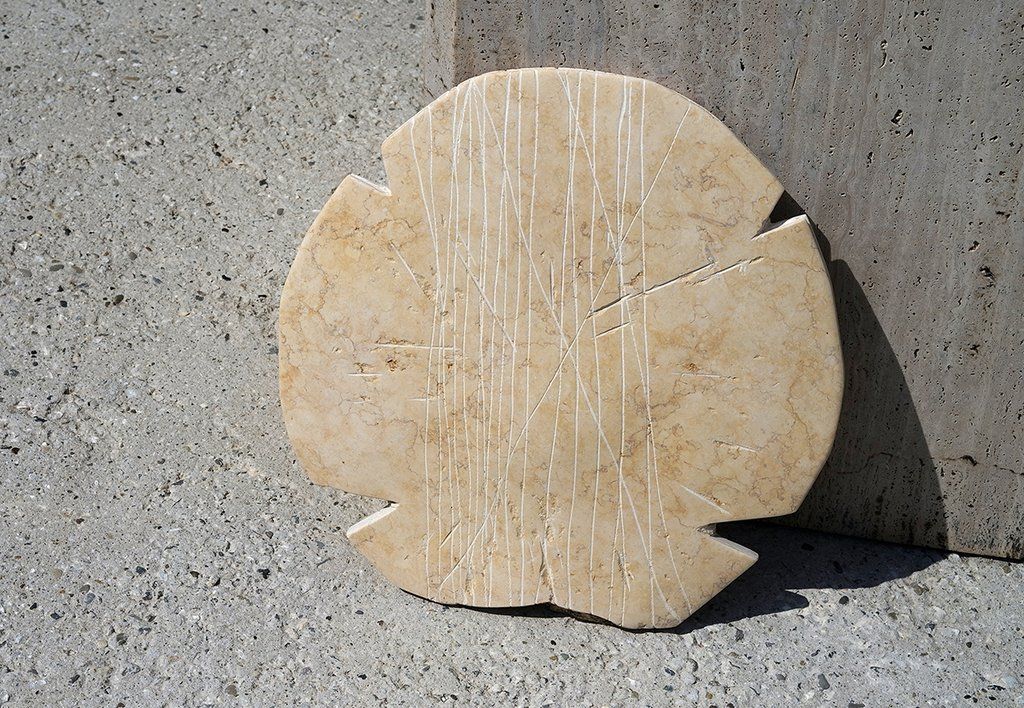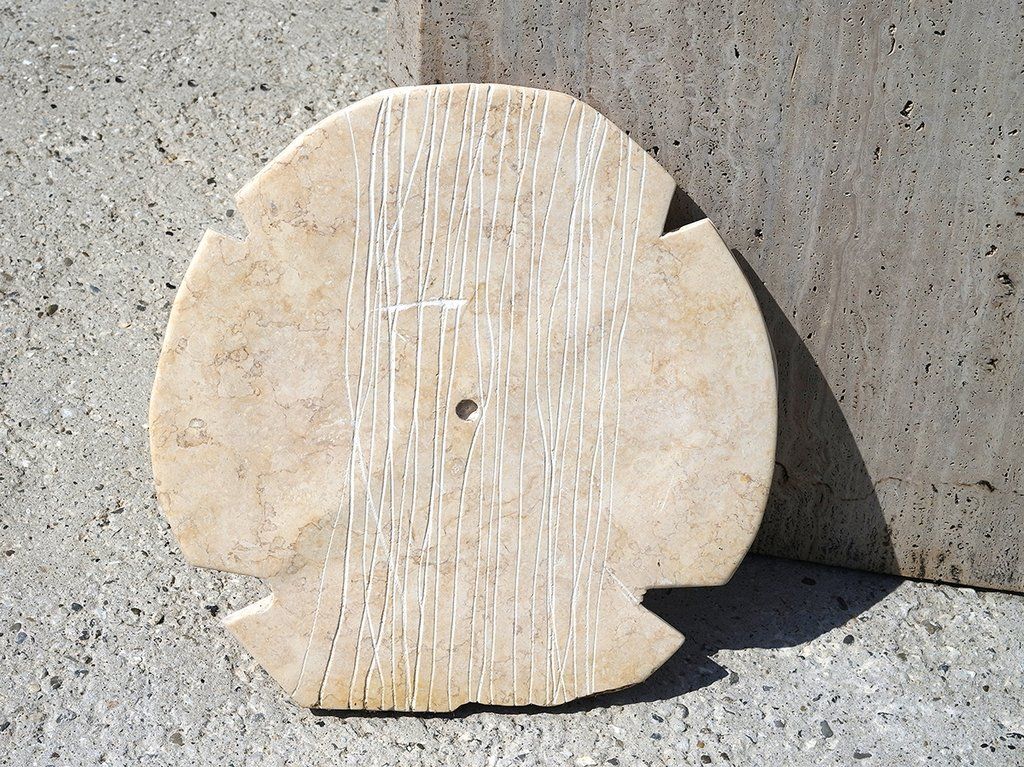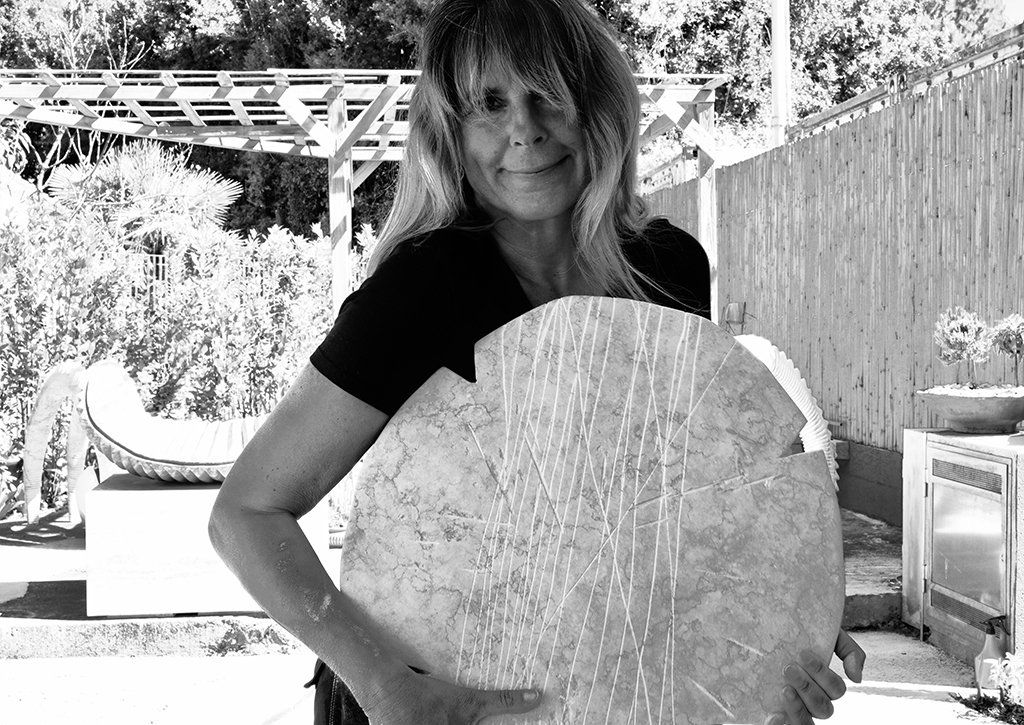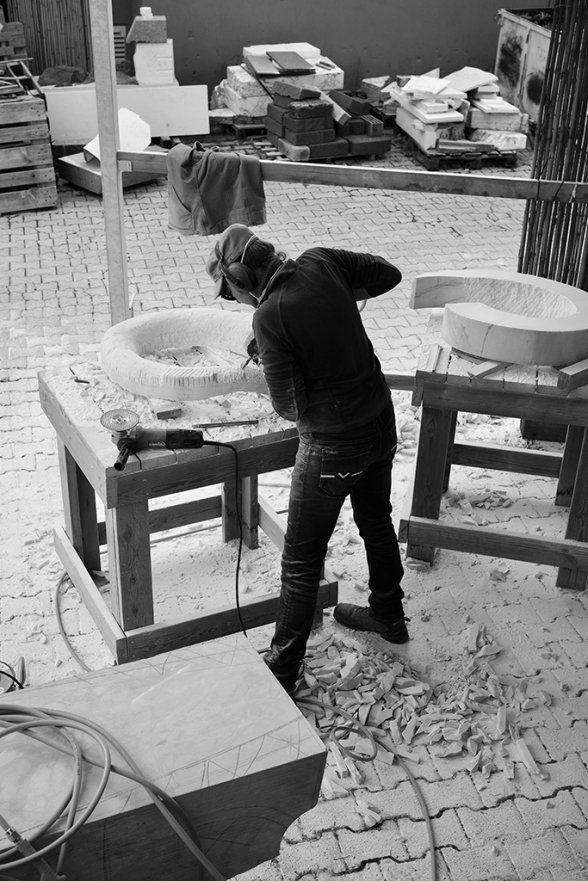on form 20
Biennial group exhibition at Asthall Manor, Burford, Oxfordshire
UK
on form 20 was held in 2020 - due to the worldwide pendamic unfortunately only online! Stay tuned for images to come....
opening June 13th and on view online until September 12, 2020.
Vanessa Paschakarnis at on form 20
from the on form website:
Vanessa Paschakarnis
Vanessa’s work explores the dialogue between humans, beasts and the beast within humans. Her sculptures question our physical relationship with the world around us: mineral and animal. She chooses rocks that recall animalistic shapes and remakes them in sculpture in a process that she understands as the opposite of abstracting a form, eliciting the distilled essence of the animal with just a few simple lines.
Horned Beings emerge out of massive blocks with their horns made of a different material, reaching out and over, like limbs closing around something. Her Shield series of sculptures are based on a seashell that, in its enlarged form, becomes a metaphor for the measure of wo/man. It is a being that relates to our scale and resists definition, as it appears to include an inner core that gives it a subtle breath. Vanessa’s moths are also metaphors for human desire and the urge to overcome physical restrictions. They rest poetically on the wall, grounding us in our desire to seek light.
Vanessa was born in Germany, but now lives and works in Nova Scotia, Canada and Pietrasanta, Italy. Vanessa was twice semi-finalist for the prestigious Canadian Sobeys Art Award. In 2011, she received the Woman of Excellence Award from the Canadian Progress Club. Her work is in public and private collections, including the National Gallery of Canada in Ottawa. She first showed at on form in 2018.
Horned Being, (Bestia Umana) 2020
Bardiglio Marble, Portuguese Marble, 184cm x 70cm x 60cm
The horns of this sculpture are fitted with tapered pins, so that they can be removed easily.
In this sculpture I am pulling the animal head literally out of the block. The sculpture stands as high as a human and the horns could be like long arms lifting to create a creature that is over towering. The sculpture is an “awesome” reminder of the human will, being a wild thing, something we should care for with “awe”.
The Shield, 2020
White Italian Marble, 183cm x 150cm x 12cm
“The Shield” is carved of a particularly strong white Italian marble from the Canaloni quarry above Carrara. Its grain is so tight, that it rings like a bell. It is mounted on a tapered pin that allows it to be free standing with a stainless plate fastened beneath the surface. It swivels easy when moved by the touch of a human hand. The Shield is a continuation of a series of sculptures that are part of my essential body of work. It refers back to a seashell, the sand dollar, found on the shore. It’s detailing reflects on a core and two halves, thus creating a presence that is fragile, yet embracing us as a thing.
Luna d’Oro, 2019
Egyptian Marble, 48cm x 50cm x 3cm
This small shield based on a flat seashell bears a band of marks, delineating its shape. Its golden colour reminds of the moon in a night sky.
Falena d’Oro 1, 2019
Egyptian Marble, 90cm x 63cm x 3.5cm
A moth is a creature of the night, that when bathed in golden light, either merges with the surface it finds itself on, or starts unfolding, soaring into the night to find light.
Falena d’Oro 2, 2019
Egyptian Marble, 100cm x 70cm x 4cm
Here the moth is like an origami folded piece of paper. Yet the surface bears marks and scratches alluding to it being a tender shield on the wall, before being the delicate creature of the night.
Bestia Romana, 2009
Travertine, Statuario Marble, 183cm x 96cm x 100cm
The “Bestia Romana” is a heavy solid piece with horns permanently glued in. The presence of this sculpture emphasizes the duality of nature through it’s permanence on the on hand and it’s lightness and unpredictability here represented by the white horns that sling around the beast’s head without ever touching it, on the other hand. The original shape forces you to circumnavigate the sculpture as it is unpredictable in its form. “Bestia Romana” gets its name from the large block of Roman Travertine that it towers upon with pride and presence.



